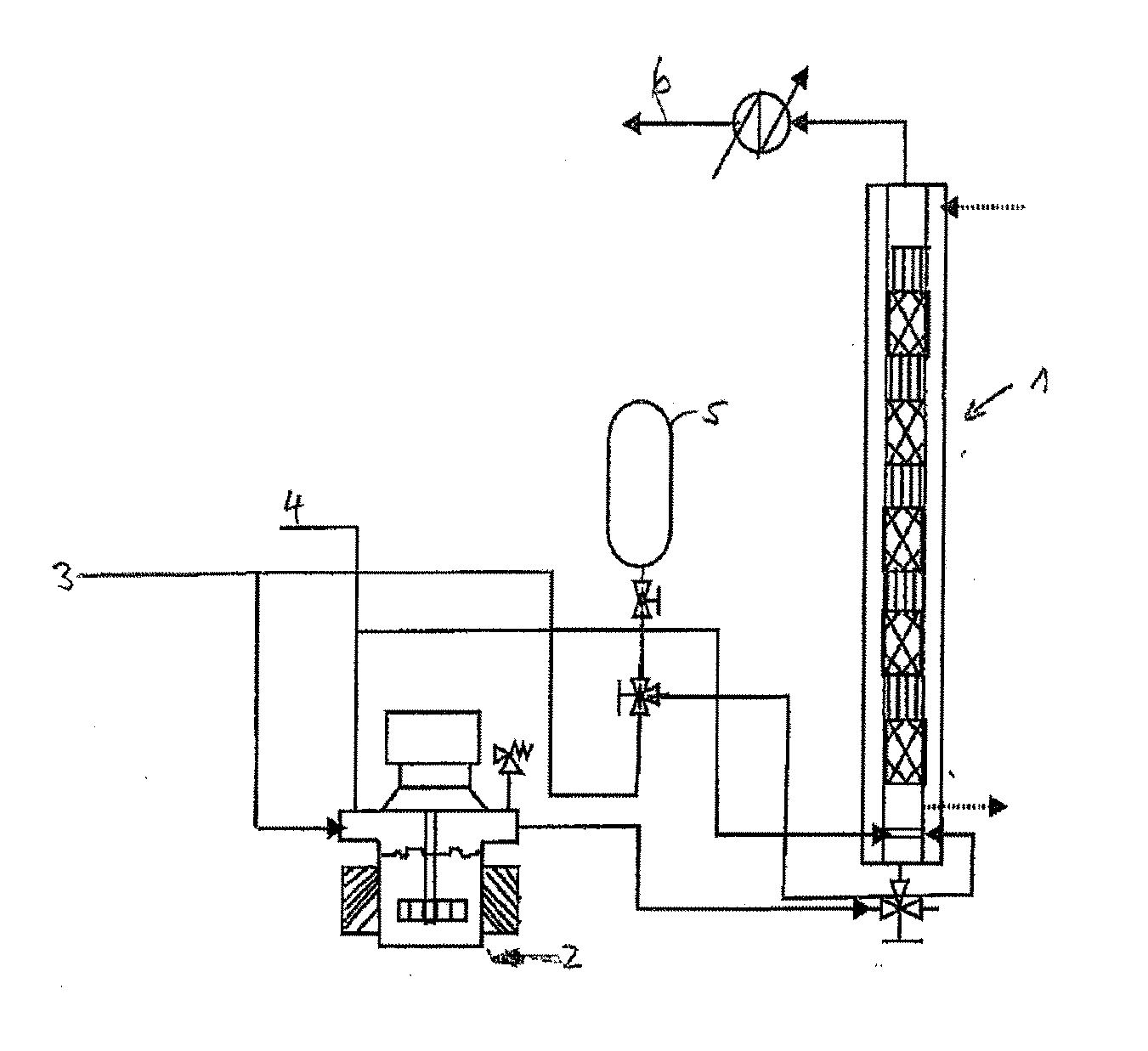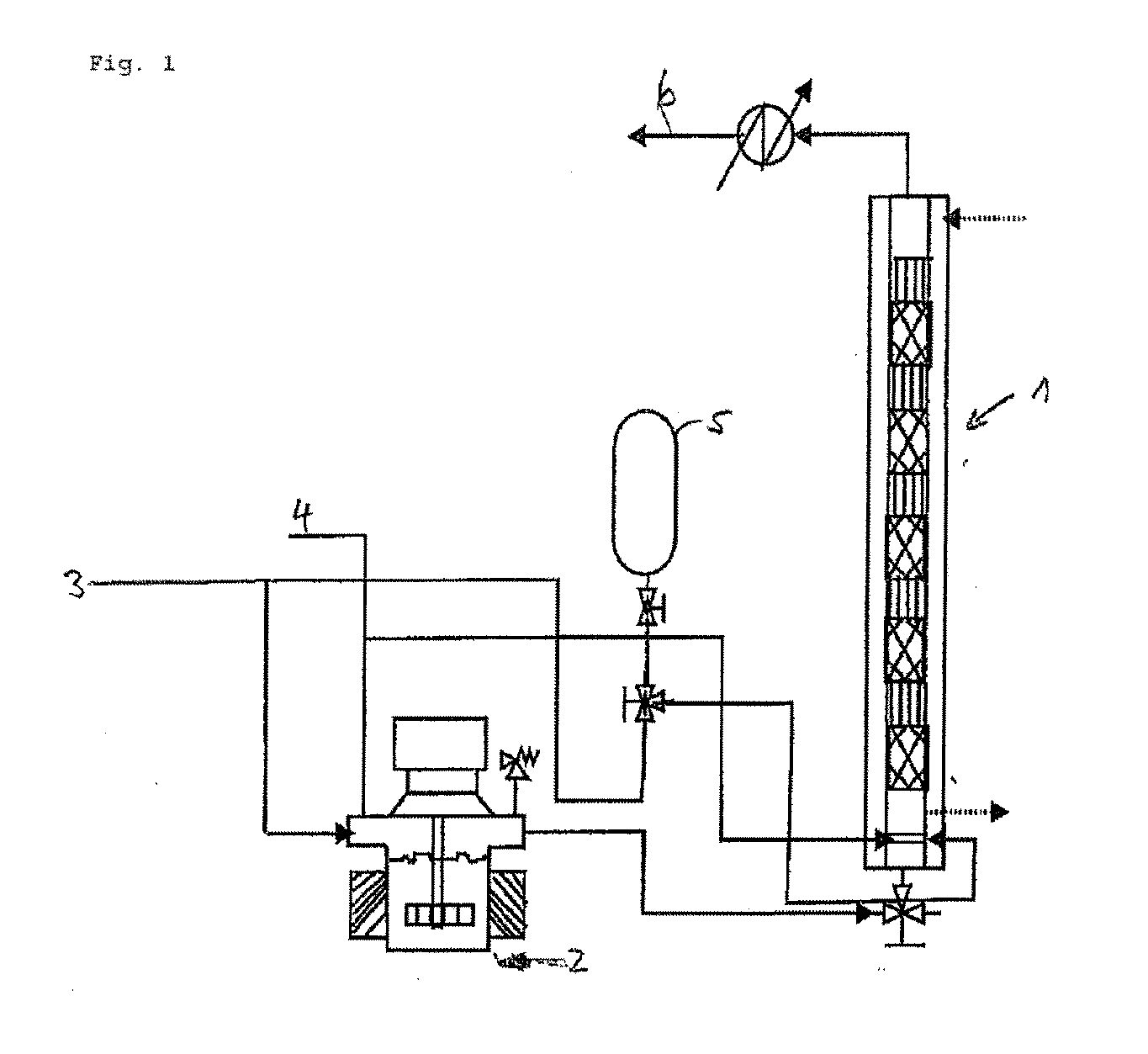Process for the continuous hydrogenation of carbon-carbon double bonds in an unsaturated polymer
- Summary
- Abstract
- Description
- Claims
- Application Information
AI Technical Summary
Benefits of technology
Problems solved by technology
Method used
Image
Examples
example 1
[0072]A reactor 1 equipped with 24 mixing elements having open blade internal structure and the geometry indicated in FIG. 5 and a gas sparger with 1 millimeter holes was used to hydrogenate a butadiene acrylonitrile polymer which had an acrylonitrile content of about 38 weight percent (used as a solution in monochlorobenzene). Osmium based complex with molecular formula OsHCl(CO)[P(cyclohexyl)3]2 was used as catalyst in the form of solution in monocholorbenzene. The hydrogen was used as essentially pure gas. A 2.5 weight percent of the polymer solution in monochlorobenzene was used and a 80 μM catalyst was used with operating temperature and pressure being 138° C. and 3.45 MPa respectively. The maximum hydrogenation degree achieved in the continuous process was 98%. The details are shown in Table I.
TABLE IParameterValuePolymer Concentration2.5%(w / w)Catalyst Concentration80μMTemperature138C.Pressure3.45MPaHydrogen Flow Rate3535ml / min (144 ml / min in reactor)Polymer Flow Rate24ml / minM...
example 2
[0074]The process described under Example 1 was repeated, except the catalyst concentration being 130 μM and with different hydrogen flow rate, hydrogenation of the unsaturated polymer and the operating conditions mentioned in Table III. In this case the concentration of the unsaturated polymer is twice that of the polymer used in Example 1 and hence the liquid hold up was less.
TABLE IIIParameterValuePolymer Concentration5.0%(w / w)Catalyst Concentration130μMTemperature138C.Pressure3.45MPaHydrogen Flow Rate3535ml / min (144 ml / min in reactor)Polymer Flow Rate23ml / minMean Residence Time35.7minReaction Time180minLiquid hold-up0.88Catalyst to Polymer Flow Ratio1:6.7
[0075]The degree of hydrogenation obtained in the continuous process after steady state with the conditions mentioned in TABLE III is shown in TABLE IV.
TABLE IVMean Residence Time (minutes)Degree of Hydrogenation (%)8.3764.816.7582.325.1391.733.496.4
PUM
| Property | Measurement | Unit |
|---|---|---|
| Temperature | aaaaa | aaaaa |
| Temperature | aaaaa | aaaaa |
| Temperature | aaaaa | aaaaa |
Abstract
Description
Claims
Application Information
 Login to View More
Login to View More - R&D
- Intellectual Property
- Life Sciences
- Materials
- Tech Scout
- Unparalleled Data Quality
- Higher Quality Content
- 60% Fewer Hallucinations
Browse by: Latest US Patents, China's latest patents, Technical Efficacy Thesaurus, Application Domain, Technology Topic, Popular Technical Reports.
© 2025 PatSnap. All rights reserved.Legal|Privacy policy|Modern Slavery Act Transparency Statement|Sitemap|About US| Contact US: help@patsnap.com



